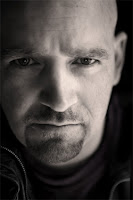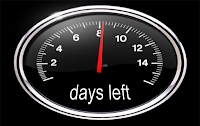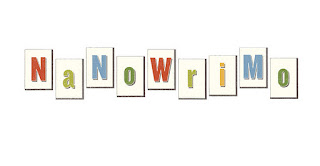 When considering self-publishing on Kindle, there are four things you must do (“Must”y writing – get it? Ha!). They are like the mustard on my hot dog: a non-negotiable element. Without it, you may as well not even try. ‘Cause I won’t bite.
When considering self-publishing on Kindle, there are four things you must do (“Must”y writing – get it? Ha!). They are like the mustard on my hot dog: a non-negotiable element. Without it, you may as well not even try. ‘Cause I won’t bite.Now, before I dive into what those elements are, I should probably tell you how I know about them. So y’all know I’ve got street cred. And mad skillz (part of having street cred is always spelling “skillz” with a z).
I’ve been writing for most of my life. I sold my first paying work when I was fifteen. Going to college, I won a bunch of creative writing scholarships and awards. Then I became a lawyer, where my job involved mostly (wait for it!) writing.
Oh, yeah, and somewhere along the way I became a produced screenwriter, member of the Writers Guild of America (which is statistically harder to do than it is to become a professional baseball player), and a published novelist. Throughout all this, I had a book that I really liked, called RUN. And though I had done all the above, no book publisher would touch RUN with a ten foot cattle prod. Largely, I suspect, because it was very hard
to figure out how to market it: it was a sci-fi/suspense/horror/thriller/apocalyptic novel with romantic elements. There is no shelf for that at Barnes & Noble.
 But I believed in the book, dangit! So I researched around, and discovered self-publishing through Amazon’s Kindle service. I decided I didn’t have much to lose, since RUN was just sitting on a shelf anyway, so decided to try my hand at self-publishing an e-book on Kindle.
But I believed in the book, dangit! So I researched around, and discovered self-publishing through Amazon’s Kindle service. I decided I didn’t have much to lose, since RUN was just sitting on a shelf anyway, so decided to try my hand at self-publishing an e-book on Kindle.
Within a few months, RUN became a bestseller, topping Amazon’s sci-fi chart, and eventually becoming the #61 item available for Kindle, out of over ten million books, games, puzzles, and blogs. I also published a young adult fantasy called Billy: Messenger of Powers which has hovered on various genre bestseller lists on Amazon for the better part of a year now. And followed those up with another e-book, and another, and another. Some of the others became bestsellers, some didn’t. But all have made money, and all have increased my fan base.
Now I don’t say this to brag, but I want you to understand I know a bit whereof I speak. Through the process, I have learned the ins and outs of Kindle publishing (and e-publishing in general), learning as much from what didn’t work as from what did. And that’s why I’ve come up with these four important things to do:
1) Make a kickin’ cover
This is one place where approximately 99% of self-published authors get it wrong. Look at most self-published books, and they look less professional. And like it or not, a lot of people go strictly off the cover. You have about ten seconds to wow them with your cool cover before they click the button and move on to another book. For the Kindle edition of Billy: Messenger of Powers, I spent days upon days designing the cover. Everything from the cover image, to the typeface, to the composition of the elements. It was critical. And it paid off. Same for RUN, and another of my books, Rising Fears,
all of which have been praised for the fact that the covers are interesting enough to “hook” readers. Some of my other covers aren’t as effective, or as professional looking, unfortunately. And guess what? They also don’t sell as well.
2) Market yourself
Here’s a fact of life in general: people generally don’t give you things for free. You have to earn them. And that includes getting people to read your work. When I wrote Billy, I spent over a month designing a website (www.whoisbillyjones.com) that was interesting, conveyed a message about the book, and had a look and feel that I felt would intrigue people and make them want to find out more. Same with the website for RUN (www.seehowtheyrun.net). And my own website, michaelbrentcollings.com, took even longer. But that was only the start. I also had a Facebook “fan” page, a Twitter feed, and did the rounds of book and genre conventions. Not to mention doing interviews, podcasts, guest blogs, and generally talking to anyone and everyone who would listen. You have to do more than write a book. You have to create an event.
3) Have a grabby description
”What do you do when everyone you know – family, friends, everyone – is trying to kill you? You RUN.”
That is the description on amazon.com for my book RUN. Two sentences that I spent an extremely long time writing. Like the cover of your book, the production description is something that has to grab people, reel them in, and not let them go. Some self-published authors think the best way to get someone to read their work is to describe every jot and tittle. But in reality, the secret isn’t information, it’s captivation. You have to intrigue your (prospective) readers. You have to leave them with serious questions that they want answered. Describing what your book is about is less important than creating a specific feeling in the mind and heart of your audience: the feeling that they will be better off reading your book than not.
4) Write something worth reading
This may seem obvious, but the fact of the matter is you have to have something pretty darn special. I’m not saying this to depress anyone: I firmly believe that most people have great stories in them, and have the potential to learn how to tell them. But make no mistake, it is something that takes practice, dedication, and perspiration. Writing is a skill. It is a discipline. Anyone can knock out a sentence or two. But getting those sentences to grab a complete stranger to the point that he or she is willing to fork over hard-earned cash to read them is another matter. Let alone getting them to like
the sentences enough that they want to tell their friends to spend their hard-earned cash on them. Again, I really do believe that most people have it in them to do this. But I also believe just as stridently that to get to that point takes practice, practice, and more practice. I have spent thousands of hours learning how to write … and I continue to
learn. Any author who wants to charm people into buying his or her work has to be willing to put in the effort to make it happen. Because without the skill to back up your work, no matter how good your basic ideas are, they probably won’t sell. There are exceptions (that’s right, Twilight), but for the most part a book has to be extraordinarily well-written in order to get people to buy it.
 That’s not to say that everyone will like your book. Some people don’t like RUN, or Billy: Messenger of Powers. Or Harry Potter or anything by Stephen King or even the bestselling book of all time (the Bible). But if you don’t care enough to develop your writing skills in service of your storytelling, you can bet that few (if any) will like it at all.
That’s not to say that everyone will like your book. Some people don’t like RUN, or Billy: Messenger of Powers. Or Harry Potter or anything by Stephen King or even the bestselling book of all time (the Bible). But if you don’t care enough to develop your writing skills in service of your storytelling, you can bet that few (if any) will like it at all.
And so…
… there you have it, folks. Again, I think most people have interesting stories to tell. But without doing the four things above, the great story will probably sit quietly in a dark corner of your closet. And that, my friends, is no fun at all.
Michaelbrent Collings is a bestselling novelist whose books RUN and Billy: Messenger of Powers have been amazon.com bestsellers. He is also a produced screenwriter and member of both the Writers Guild of America and the Horror Writers of America. His blog is at http://michaelbrentcollings.com/blog2.html, and you can follow him on Facebook at http://www.facebook.com/pages/Michaelbrent-Collings/283851837365 or on twitter @mbcollings.














